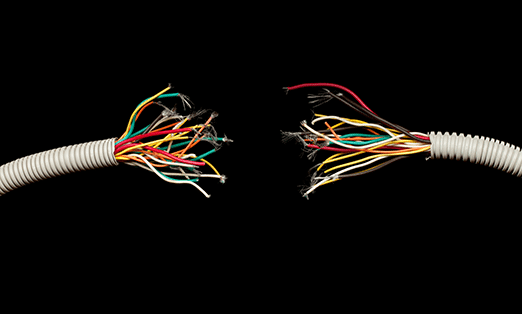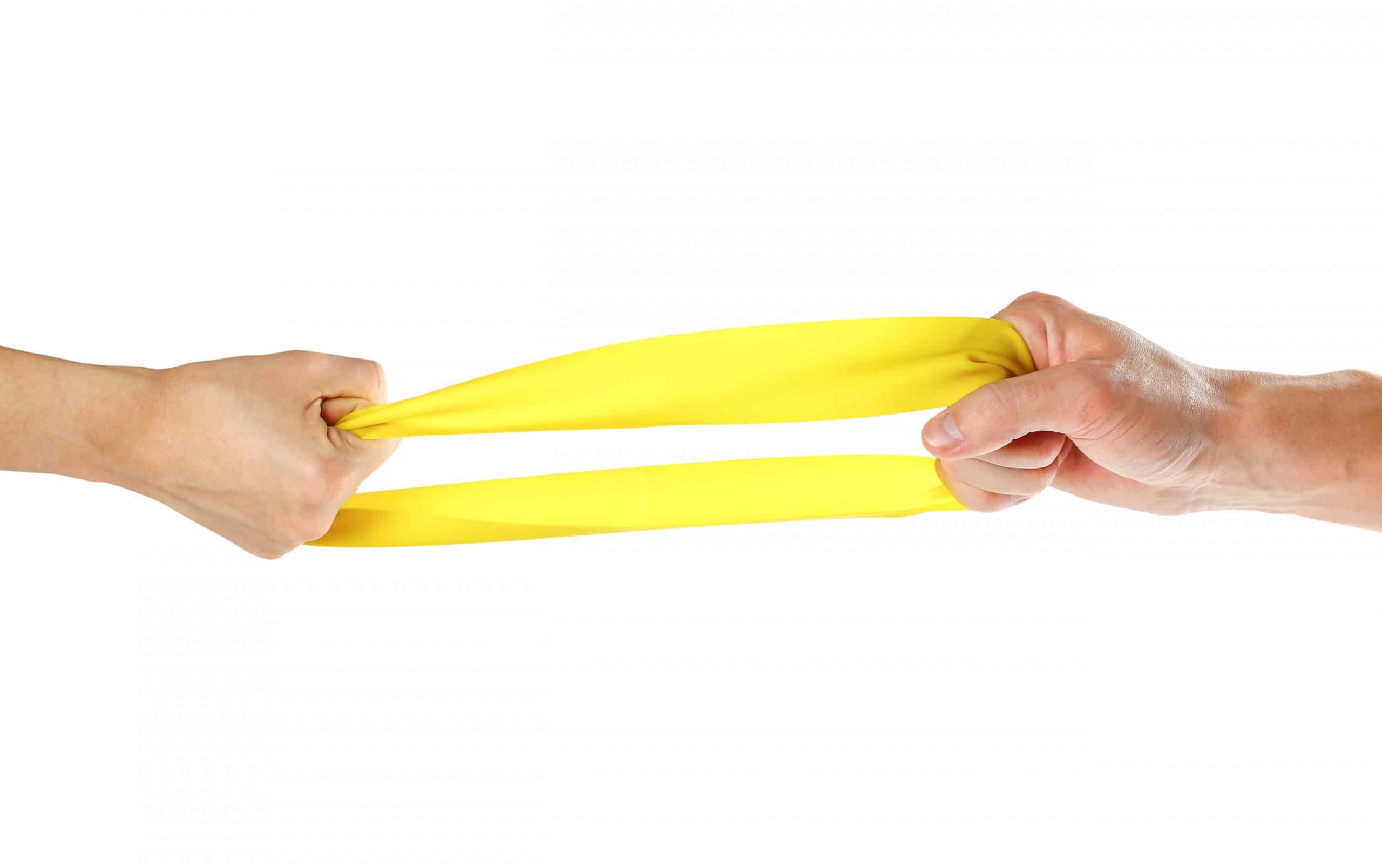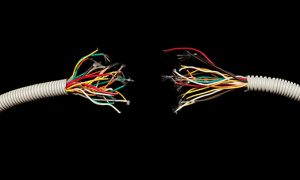Peripheral Nerves
Slide
Slide
Peripheral Nerves
What is a Nerve?
Nerves are collections of cells that are part of the Peripheral Nervous System (PNS). The body is organized into systems like the nervous system, or cardio-vascular system (heart, lungs, and blood vessels). The nervous system is made of the Central Nervous System (CNS), which is made up of the brain and spinal cord, and the PNS which is made up by the nerves of the body. Usually, the term “nerve” refers to a specific nerve like the sciatic nerve in the leg, or ulnar nerve in the arm and these are made of thousands of individual cells called neurons. Each neuron receives and transmits information across the body. Nerves transmit information through chemical and electrical signals. They are often compared to electric wires because:
- they communicate through electrical signals and
- they connect key structures such as our organs and muscles in our body with the spinal cord and the brain.
Peripheral Neuropathy vs. Peripheral Nerve Injury?
Neuropathy is a commonly used term which causes confusion. Neuropathy and peripheral nerve injuries both affect the nerves, but they are different conditions.
Neuropathy is a general term for nerve damage that often develops slowly over time. It can be caused by diseases like diabetes, infections, or even certain medications including chemotherapy. Symptoms may include tingling, numbness, weakness, or pain, usually in the hands and feet.
Peripheral nerve injuries, on the other hand, usually happen suddenly due to trauma, like a cut, crush, or stretch injury. These injuries can cause loss of feeling, muscle weakness, or even paralysis in the affected area. Sometimes nerves can heal on their own, but severe injuries may require surgery.
In summary, neuropathy is usually a long-term condition caused by diseases or toxins, while peripheral nerve injuries happen suddenly from physical damage. Interestingly, there is a growing body of literature testing the idea that traditional treatments such as decompression of nerves, improves outcomes for neuropathies.
Neuropathy is a general term for nerve damage that often develops slowly over time. It can be caused by diseases like diabetes, infections, or even certain medications including chemotherapy. Symptoms may include tingling, numbness, weakness, or pain, usually in the hands and feet.
Peripheral nerve injuries, on the other hand, usually happen suddenly due to trauma, like a cut, crush, or stretch injury. These injuries can cause loss of feeling, muscle weakness, or even paralysis in the affected area. Sometimes nerves can heal on their own, but severe injuries may require surgery.
In summary, neuropathy is usually a long-term condition caused by diseases or toxins, while peripheral nerve injuries happen suddenly from physical damage. Interestingly, there is a growing body of literature testing the idea that traditional treatments such as decompression of nerves, improves outcomes for neuropathies.
Sign up to be notified when new educational content is available!
Central Nervous System vs. Peripheral Nervous System
The central nervous system is composed of the brain and the spinal cord. The brain is responsible for processing all of the information that we take in from our environment while the spinal cord connects our brain to the rest of our body. The peripheral nervous system is made up of peripheral nerves (pictured right in yellow) which includes all the nerves in your body from the top of your head to the tips of your toes. These nerves send messages from the brain and spinal cord (pictured in orange) to the muscles that control the movement of limbs. Peripheral nerves also send sensory information from your body and limbs to the central system nervous system.
These peripheral nerves serve two major functions:
- Sensory neurons send sensory information such as temperature, touch, vibration, and pain, etc. from our body and extremities to the central nervous system. There are sometimes referred to as afferents. This information informs our body what is happening in our extremities as well as where they are in space relative to the rest of our body (proprioception).
- Motor neurons receive commands from the central nervous system and send the information to our muscles to move our bodies and extremities such as our legs arms and hands. These are sometimes called efferent.
If you think you might have a nerve problem, use our directory to identify a nerve expert to contact.
Structure of Peripheral Nerves
A cross-section of a peripheral nerve can be seen in the lower right (at left). This structure is the inspiration for the GNF logo. Nerves are grouped into fascicles. These fascicles are, in turn, grouped into larger nerve bundles. Similar to electrical wires, these individual nerve fibers carry electrical signals to and from the brain and spinal cord to our extremities. Blood vessels (pictures in blue and red) supply the nerves with needed energy in the form of glucose and oxygen they require to function.

Parts of the Peripheral Nerve
- Epineurium – the outermost layer of connective tissue, which is a supporting and protective part including the main supply channels of the neural vascular system (Seddon, 1972)
- Perineurium – protects the nerve bundles by acting as a diffusion barrier to irritants and provides tensile strength and elasticity to the nerve.
- Fascicles – are bundles of nerve fibers that typically share a common function or target area.
- Nerve Fibers – A nerve fiber is an axon plus its associated Schwann cells.
- Endoneurium – is a space bounded by the perineurium and includes the nerve fibers, supporting glia, and extracellular matrix containing collagen.
Nerves are important for many aspects of our health and quality of life such as mental health. Because of that, they are often referenced in common news stories. Our Awareness Committee will be highlighting these news stories and the importance of nerves.
Injuries to Peripheral Nerves
The brain and spinal cord are protected by the bones of the skull and vertebrae. Peripheral nerves are less protected than nerves in the brain or the spinal cord. Peripheral nerves are soft and sometimes very close to the surface, just under the skin or other soft protective tissues. Because of this, they can get multiple types of injuries. Injuries to peripheral nerves often go untreated and can significantly decrease quality of life for patients. However, most injuries to peripheral nerves can be treated to restore function. Click below to learn more.

Similar to cut wires that can no longer send electrical signals, nerves that are cut or severed due to a traumatic event are not able to send messages to our brain. A cut can be sharp, like cuts from knives, razors, or glass. Or, cuts can be blunt like dog bites, or accidents with machines like saws or drills.
Cut or Laceration

Nerves may be squeezed or pinched by surrounding tissues, which increases pressure on the nerve and may disrupt function. This can lead to muscle weakness, a burning or tingling sensation, numbness, or pain. A common type of this injury is Carpal Tunnel Syndrome.
Compression

Nerves may be stretched to the point of injury to the nerve fibers. This is common in motor vehicle accidents such as car or motorcycle accidents.
Stretching









